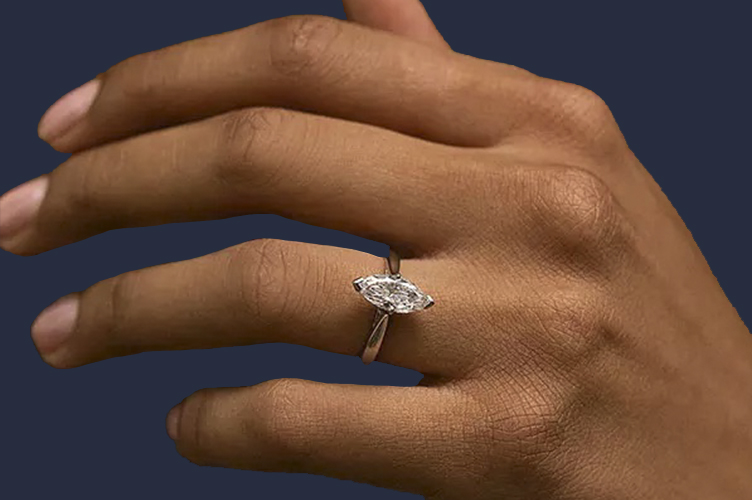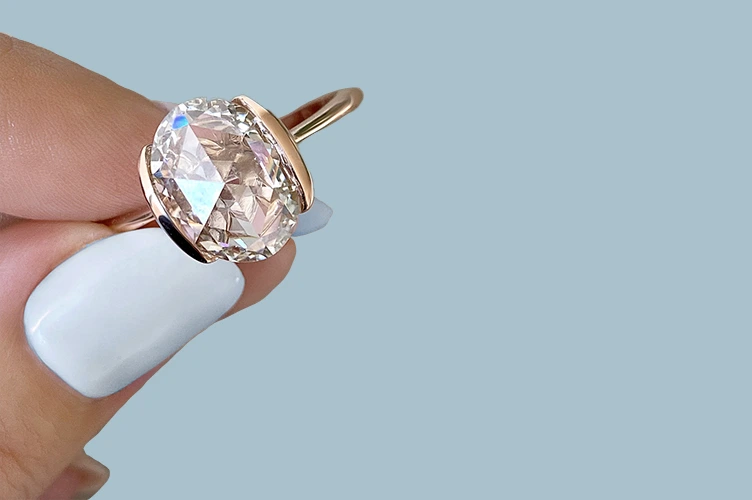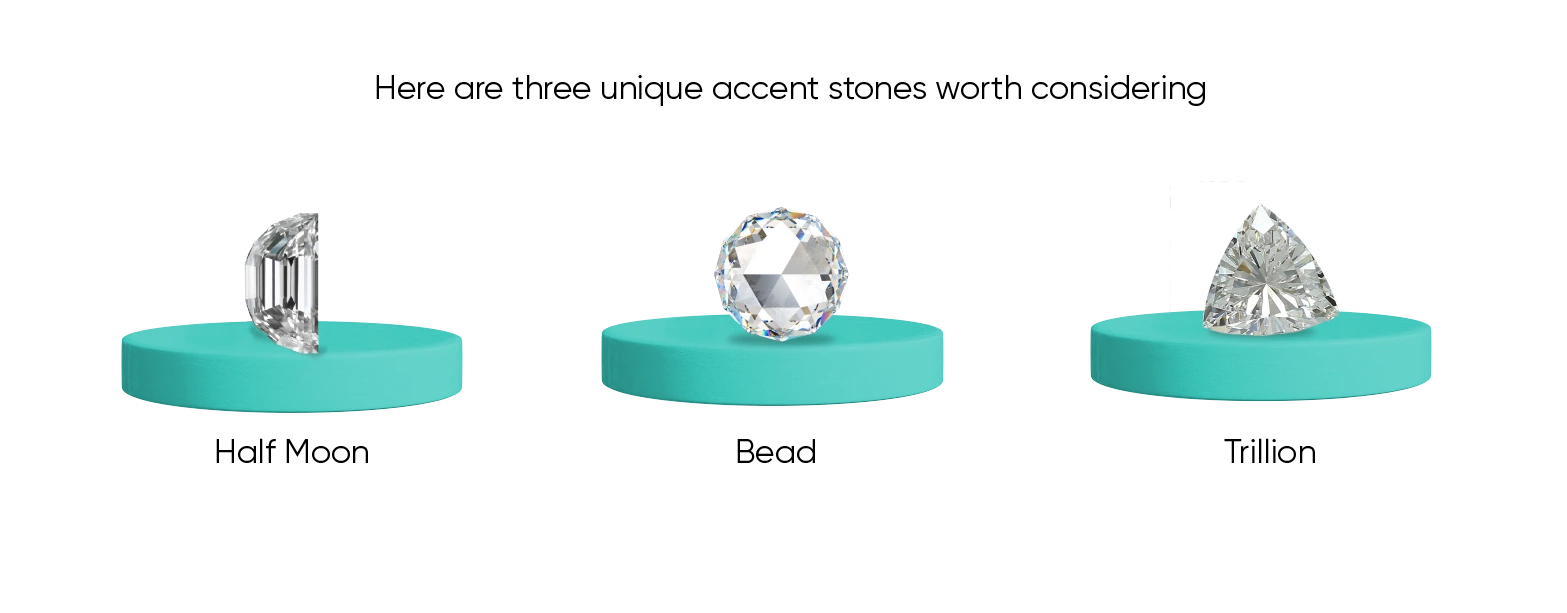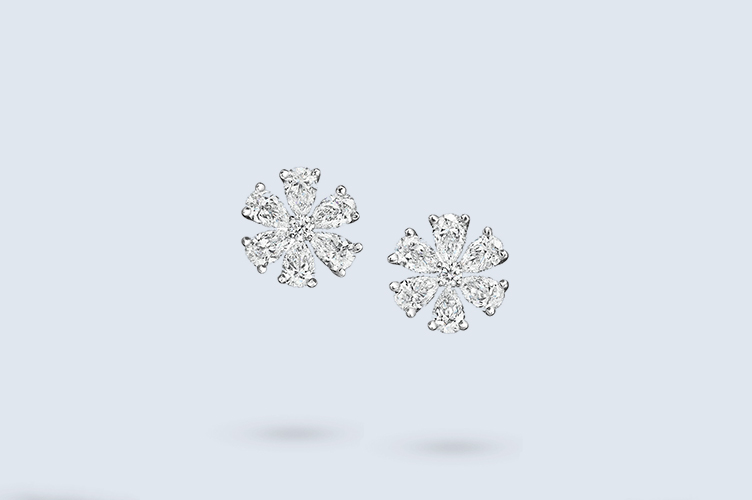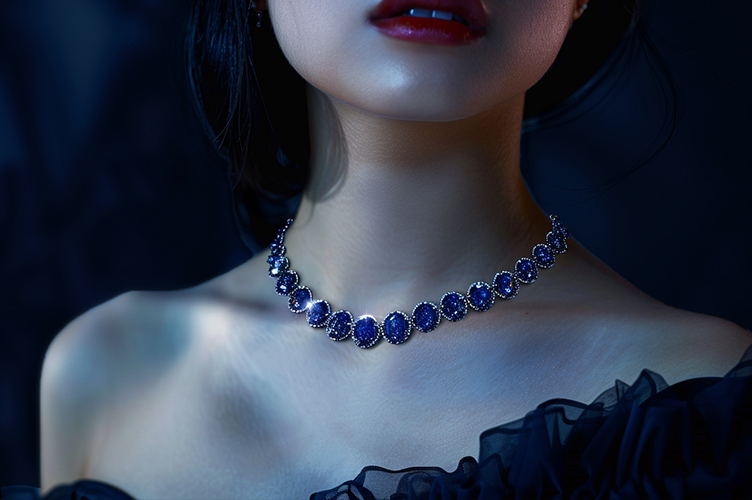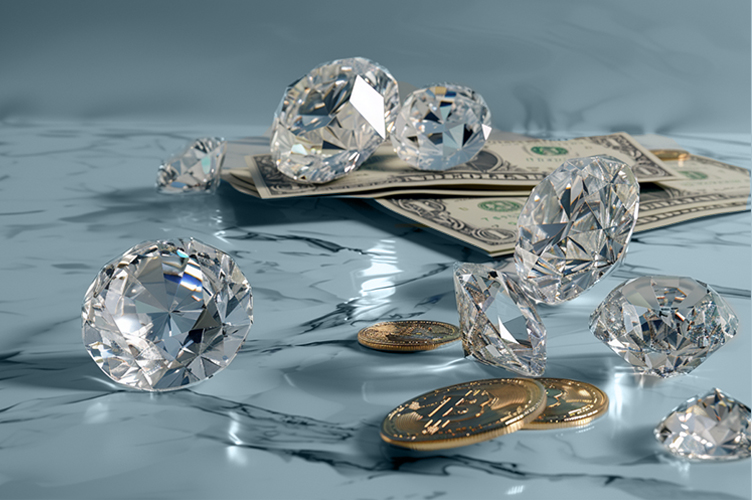The quest for the perfect engagement ring is a big one. So shouldn’t you consider all the available options? While popular cuts like the round brilliant cut, princess cut diamond, and emerald cut shine bright, we invite you to delve into more rare cuts. Let’s explore the exquisite alternative that you don’t see every day. You might find the perfect symbol of everlasting love in one of these rare diamond cuts.
What You Will Learn
- Marquise Cut Diamond: Elegance with a Twist
- Radiant Cut Diamond: The Perfect Blend
- Asscher Cut Diamond: Timeless Art Deco Charm
- Rose Cut Diamonds: Vintage Romance
- French Cut Diamonds: Sleek and Geometric
- The Cushion Cut Diamond: Classic with a Twist
- The Old European Cut Diamond: A Glimpse into History
- Do I need insurance for an engagement ring?
Marquise Cut Diamond: Elegance with a Twist
The marquise cut diamond exudes timeless elegance with its elongated shape and pointed ends, resembling a boat or a football. The marquise cut is known for its regal appearance. This cut creates an illusion of long fingers and provides a flattering sparkle that catches the eye from every angle. This diamond cut has the added benefit of appearing more significant than its carat weight. The marquise cut diamond is a beautiful choice for a classic yet distinctive look.
Learn more: Is a marquise diamond right for my engagement ring?
Radiant Cut Diamond: The Perfect Blend
The radiant cut diamond is a fusion of the elegance of an angular diamond shape and the brilliance of a brilliant cut. With a square or rectangular shape, the radiant cut offers a similar profile to princess or emerald cut diamonds. However, unlike those cuts, radiant cut diamonds have many tiny light-reflecting facets. This cut makes the diamond shine with an uber-sparkly shimmer, surprisingly akin to round brilliant cuts.
Asscher Cut Diamond: Timeless Art Deco Charm
Consider the Asscher cut diamond if you’re a fan of vintage-inspired designs. This step-cut stone has a distinctive symmetrical look with a square shape with cropped corners. The Asscher cut reflects the Art Deco era’s elegance and pairs beautifully with classic and contemporary settings, allowing you to create a ring that stands the test of time.
Rose Cut Diamonds: Vintage Romance
Rose cut diamonds have large triangular facets across their domed top that resembles a rosebud. This diamond shape is flat on the bottom, so making a rose cut diamond takes less rough stone. The result? A cheaper-than-usual diamond which an enchanting vintage vibe. This cut originated in the 16th century and regained popularity in recent years. Rose cut diamonds offer a subtle, gentle sparkle and an air of romantic nostalgia.
French Cut Diamonds: Sleek and Geometric
The French cut diamond is renowned for its unique faceting style. This rare diamond cut enhances the stone’s natural beauty with a rectangular or square shape and a series of parallel step-like facets. French cut diamonds possess a sleek and geometric appeal, exuding elegance and sophistication. This cut may be perfect for you if you adore clean lines and a minimalist aesthetic.
The Cushion Cut Diamond: Classic with a Twist
The cushion cut diamond offers a blend of vintage charm and modern brilliance. With its square or rectangular shape and rounded corners, this cut showcases a mesmerizing play of light. If you like the angled shape of the emerald cut diamond but prefer something softer, this shape is for you. The cushion cut is an excellent choice for those seeking a timeless yet distinctive look. It radiates warmth and enchantment.
The Old European Cut Diamond: A Glimpse into History
Travel back in time with the old European cut diamond. This cut, originating in the late 1800s, embodies the elegance and craftsmanship of the Victorian and Edwardian eras. With a circular shape and a smaller table facet, old European cut diamonds provide a unique charm and a warm, romantic sparkle. If you’re captivated by history and vintage allure, this cut is a hidden gem.
Rare Diamonds as Accent Stones: Adding a Touch of Uniqueness
Maybe you want a traditional engagement ring with a round brilliant cut diamond as your centerpiece. There is a way to add a hint of uniqueness to your look with accent stones. Using rare, unusual diamond cuts as accent stones can enhance the allure of your engagement ring. Here are three unique accent stones worth considering:
- Half Moon Diamonds: These moon-shaped diamonds offer an elegant and subtle complement to your center stone, framing it with a crescent-like embrace. The half moon diamond adds an exquisite softness to rectangular diamonds like the emerald cut.
- Bead Cut Diamonds: The bead cut diamond provides a delicate, understated beauty that adds whimsy and individuality with their rounded shape and faceting.
- Trillion Cut Diamonds: With their triangular shape and brilliant faceting, the trillion cut diamond infuses a modern and geometric flair to your ring, strikingly contrasting amongst other stones.
Do I need insurance for an engagement ring?
Rare diamond cuts need specialized jewelry insurance to protect against loss, theft, damage, and mysterious disappearance.
BriteCo’s affordable policy covers up to 125% of your ring’s appraised value, and it’s fast and easy to get started.
Get an instant free quote for an affordable monthly or annual payment. Then you have to upload the required documentation and get coverage in minutes.
Insurance for engagement rings is a must. And there’s finally an affordable and easy way to get comprehensive jewelry insurance.
Also Check:
How Are Diamonds Cut? | BriteCo Jewelry Insurance
Is a Square Cut Diamond Right for My Engagement Ring?
Unveiling the Brilliance of the Trilliant Cut Diamond
Unique Diamond Shapes: The Lozenge Cut Diamond
What are Nature Inspired Engagement Rings?

